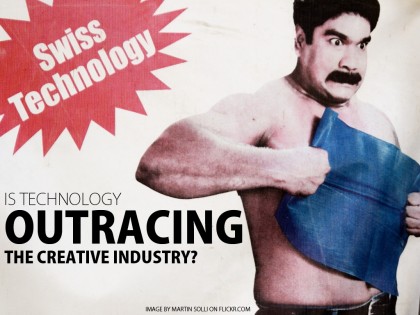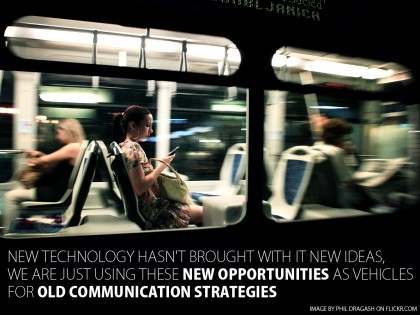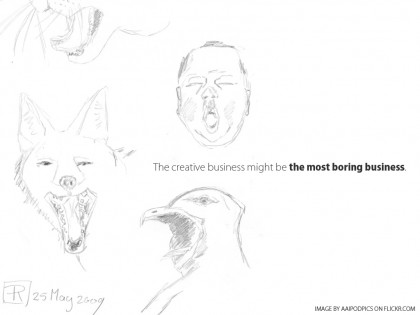The way brands and agencies have combined new technology with their sales, marketing and design strategies, give the impression that technology is outgrowing the creative and communications industry almost ten to one.

A descriptive example is the OMO/Unilever campaign being run in Brazil at the moment (read it here: popsop.com / brandchannel.com)
. Where they are putting a large GPS tracking device into 50 boxes of a new OMO detergent
• Oral Agents What is sildenafil citrate? dysfunction, changes in sexual desire, and orgasmic or.
. And then having teams follow customers as they take it out of the store. At home the people are given a small video recorder and asked to video tape personal moments of family happiness.
- To me this presents several missed opportunities
. First of all having teams following 50 boxes in a large country as Brazil seems like trying to find a needle in a haystack. Secondly the prize seems to small, thirdly asking people to share their private and personal family moments with the world might be difficult (at least when you are only inviting 50 random people to participate). And lastly; this is detergent, people don’t care, and the context surrounding detergent is probably more connected to housework or clean stuff than the universal value of family happiness (I rant, and am not familiar with the target group, but there it is).
What the campaign does unveil though, and is a brilliant example of, is how bad we are in the communications and creative business at using technological innovation to do our own innovation. We seem to spend large amounts of time and resources on picking out a technology, fitting it into a marketing campaign (and avoiding the hurdles it introduces), rather than using it to innovate our own concepts.
What I am saying is that new technology hasn’t brought with it new ideas, we are just using these new opportunities as vehicles for old communication strategies.

Donald Norman suggest that technology always comes first, and then it creates a need. I interpret this as technology in the beginning will always be rudimentary and difficult to use – innovation in application and design follows in the footsteps of the technology (and I might be a bit impatient).
But we need to keep our eyes on the goal, we need to be aware that we are still talking to people in the same old way – even if the format available has changed completely. In a former post I mentioned the mobile industry having been the only industry to see that what they have been doing has been completely wrong – it is time for the other industries to follow suit
.
With the energy, innovation and ideas we are seeing from engineers, start-ups and even companies established production and logistical chains, the creative business is presenting itself as conservative and slow to react.
The creative business might be the most boring business.



[…] Vía Helgge Tennø […]
I don’t want to bitch about it too much (yes I do apparently), but this campaign sounds like the paranoid delusions of someone suffering from schizophrenia. “There are tiny tracking devices in those boxes of detergent! Oh yes, I know because I bought one, and these people followed me because of it! At first I thought it was just me seeing things again, but then they proved they were real by making the detergent box beep without touching it! And then they made me film private moments from my family life!” Surely, there’s a better way of integrating technology.
I wonder what might have happened if the detergent people followed me around during my less-than-friendly experience with an oddly-shaped Gain detergent container. I usually blog about technology, but in this case, I blogged about laundry UX, with pictures:
For a smile: Gain Detergent Container Looks Like Don Norman’s User Unfriendly Teapot
http://interactivemultimediatechnology.blogspot.com/2010/01/for-smile-gain-detergent-container.html
I discussed the topic in more detail in another blog, and I was surprised that it generated some controversy.
(Updated with Solution – TIDE) The designers of this Gain detergent container obviously didn’t read Don Norman’s “The Design of Everyday Things” !
http://tshwi.blogspot.com/2010/01/designers-who-created-this-gain.html